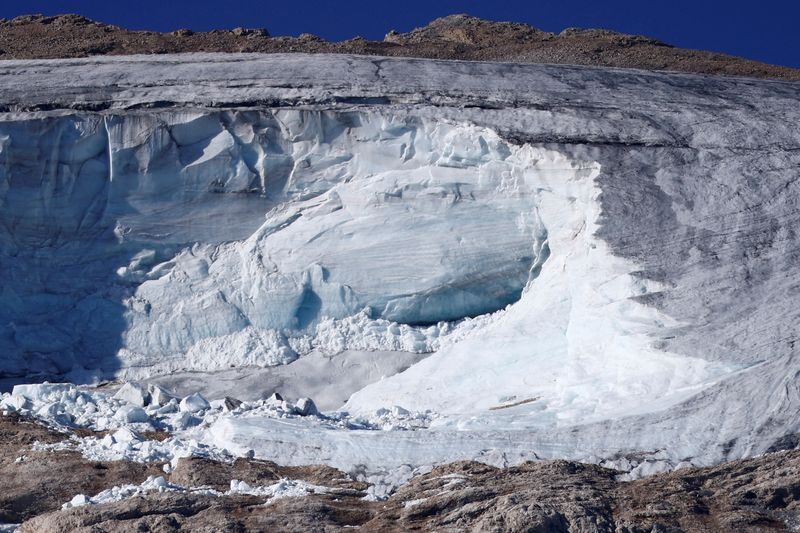Costs of climate change rising and many countries cannot afford it
2022.12.14 07:28
[ad_1]

Costs of climate change rising and many countries cannot afford it
Budrigannews.com – Governments and businesses were compelled to examine the financial risks and their liability exposure more closely in a year marked by yet more climate-related floods, hurricanes, and droughts.
This was especially evident at the United Nations climate conference in Egypt, where nations reached a historic agreement to establish a fund to assist developing nations in coping with the costs of disasters caused by climate change.
However, Egypt’s COP27 talks did little to address the cause of those disasters—the atmosphere’s ever-increasing levels of greenhouse gases.
After yet another year of extreme weather disasters, including record heatwaves from the United States to China, glaciers collapsing in India and Europe, and an unending drought pushing millions of people toward famine in East Africa, vulnerable countries were determined to get the so-called Loss and Damage Fund approved.
According to risk modeling firm RMS, the year saw three of the most expensive disasters of the decade, including “dystopian” flooding that cost Pakistan $40 billion, a series of deadly summer heatwaves that cost Europe more than $10 billion, and Hurricane Ian, which destroyed Florida and South Carolina at a cost of $100 billion.
The Misfortune and Harm reserve likewise denoted a strategic overthrow by unfortunate countries, following quite a while of U.S. also, European opposition over fears it could open them to lawful risk for their authentic discharges. However, countries agreed that rather than rich nations, the fund would draw funds from existing financial institutions, easing liability concerns for the time being.
Investors faced increasing pressure to either go too far or not enough to address climate risks as watchdog groups criticized businesses for not disclosing the financial risks posed by climate change.
In terms of what businesses ought to do, it’s the wild west. According to Katharine Hayhoe, chief scientist at the Nature Conservancy and a Canadian climatologist, “And there are some that are greenwashing, yes.” However, “getting pushback from the purity culture, people saying that anything but perfection isn’t worth it” is happening to some who are making an honest effort.
More EU will increase energy financing at expense consumers to abandon Russian gas
Even Hayhoe and other people who warned about the dangers of climate change were criticized by activists for eating meat or flying to conferences.
People started throwing soup, painting, and gluing themselves to things at some point.
Hayhoe said, “I understand.” A mental response to the veritable trepidation individuals feel when they begin to figure out the greatness of this issue.”
Some people tried to take their complaints to court. According to the Sabin Center for Climate Change Law at Columbia University, there are currently 2,176 climate-related lawsuits pending globally, with 654 filed in U.S. courts.
Economists and scientists are also making further inroads into the precise calculation of a nation’s contribution to climate change and specific disasters. This line of contention, alluded to as “environment attribution science,” advanced into additional courts.
Michael Burger, executive director of the Sabin Center, stated, “Up to this point it’s been a battle of the experts on paper.” An actual trial with evidence aimed at attributing a certain percentage of responsibility to a nation or business that pollutes the climate has not yet been seen.
However, experts assert that it is only a matter of time.
WHAT IMPACT WILL IT HAVE ON 2023?
As climate change continues to worsen, expect more public anxiety in the new year, as well as increased concerns about liability and risk among businesses and governments.
Investors and businesses alike will be under pressure to climate-proof their operations and supply chains.
He said that more climate cases will be filed in court, with the goals of holding corporations accountable for their emissions or deceptive practices and challenging national governments to increase their climate policy ambitions.
Countries will meet once more at the COP28 climate summit in Dubai at the end of the year. In addition, they will be put under additional pressure to ensure that emissions are cut in half by 2030 and eliminated completely by 2050, which is the only way to keep global warming to less than 1.5 degrees Celsius.
“We can’t keep sticking our heads in the sand,” Burger said, “an increasing number of powerful actors are coming to terms with the fact that we can’t keep sticking our heads in the sand.”








